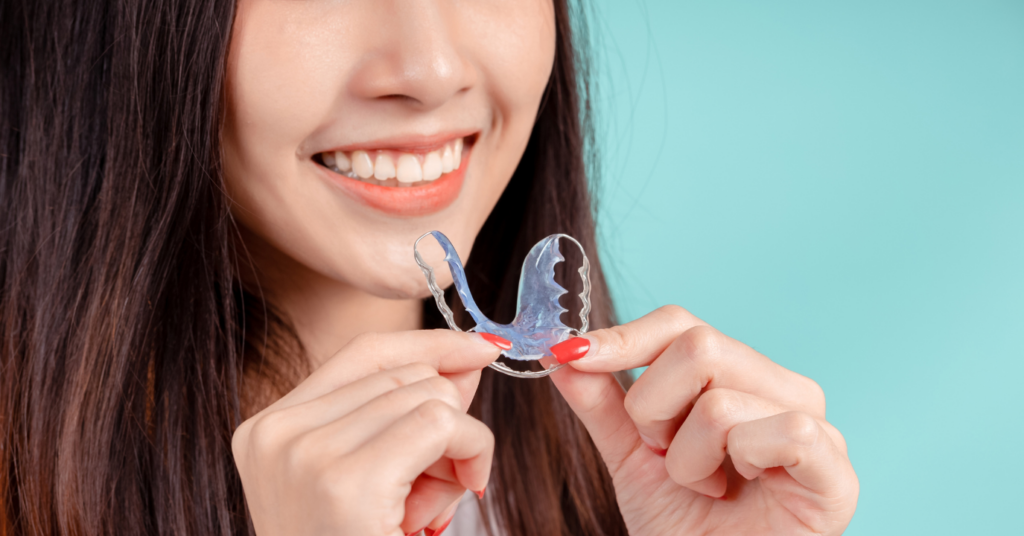If you’re navigating the world of orthodontics, understanding retainers is crucial for maintaining your smile after braces. Retainers play a vital role in ensuring your teeth stay in their new positions, preventing any unwanted shifts.
With various types available, it can be overwhelming to choose the right one for your needs.
What Is a Retainer?
A retainer guide serves as a comprehensive resource that offers detailed information on using, caring for, and maintaining retainers. Retainers are custom-made devices designed to keep teeth in their correct position after orthodontic treatment.
Effective guides cover essential aspects of retainer usage to enhance your understanding and ensure optimal outcomes.
Types of Retainers
A retainer guide typically explains various types of retainers, which include:
- Fixed Retainers: These are permanently attached to your teeth, providing continuous support.
- Removable Retainers: Options include:
- Hawley Retainers: Featuring a plastic base and metal wiring, they’re adjustable to fit your teeth.
- Clear Retainers: Molded from a transparent material, they are less noticeable.
- Vivera Retainers: Custom-made from advanced materials for durability and comfort.
Each retainer type serves specific purposes based on your orthodontic needs.
Proper Care and Maintenance
A retainer guide emphasizes daily cleaning, safe storage, and regular check-ups for retainers. Key care tips include:
- Daily Cleaning: Rinse retainers daily with lukewarm water and use a toothbrush with mild soap.
- Safe Storage: Keep retainers in a protective case when not in use to prevent damage.
- Regular Check-Ups: Schedule visits with your orthodontist to ensure the retainer remains effective.
By following these guidelines, you can maintain your retainer’s effectiveness and prolong its lifespan.
How to Use Your Retainer
Understanding how to effectively use your retainer is essential for maintaining your orthodontic results. This section details essential steps for accessing and customizing your retainer.
Accessing Your Retainer
To access your retainer, first, schedule a fitting with your orthodontist. During this appointment, you’ll receive guidance on your specific retainer type and how it functions.
Follow the instructions provided on the care and maintenance of your retainer for optimal use. Regular access to your retainer usually involves daily removal, cleaning, and proper storage when not in use.
Store your retainer in the provided case to prevent damage.
Customizing Your Retainer’s Appearance
Customizing your retainer increases its personalization and aesthetic appeal. Many orthodontists offer options to modify the color or pattern of your retainer.
You can select from various styles and designs to match your preference. Ensure you consult with your orthodontist before making modifications to maintain the retainer’s functionality.
Customized retainers can also enhance your comfort and encourage regular use.
Best Practices for Retainer Care
Maintaining your retainer is essential for its effectiveness and longevity. Follow these best practices to ensure proper care.
Daily Cleaning Tips
- Brush Your Retainer: Use a soft-bristled toothbrush with mild soap or specialized retainer cleaners. This helps eliminate plaque, bacteria, and food residues effectively.
- Rinse Thoroughly: Rinse your retainer with lukewarm water after brushing. This step ensures any remaining residue is removed and helps keep your retainer fresh.
- Avoid Harsh Cleaners: Never use toothpaste, mouthwash, or hot water. These substances may damage the material or cause it to warp.
Storage Tips
- Use a Retainer Case: Always store your retainer in its case when not in use. This minimizes the risk of loss or damage.
- Keep Away from Extreme Temperatures: Avoid heat sources like heaters, stoves, or hot cars. Excessive heat can warp materials and impact the fit.
- Maintain Hygiene: Ensure the storage case is clean. Regularly clean the retainer case with soap and water to prevent bacterial growth.
Troubleshooting Common Retainer Issues
Identifying retainer problems quickly prevents further complications. Understanding how to recognize damage and knowing your repair options keeps your retainer functioning effectively.
Recognizing Damage
Retainer damage arises from improper care, accidents, or natural wear and tear. Watch for these common signs:
- Loose or Tight Fit: A retainer that feels too loose or tight often indicates a need for adjustment or replacement.
- Cracks or Warping: Any visible cracks or warping compromises the retainer’s fit and efficiency.
- Discomfort or Pain: Experiencing discomfort or pain points to an improper fit or damage that requires attention.
- Visible Gaps: Gaps between your retainer and teeth signify an improper fit and potential issue.
Immediately reach out to your orthodontist to report any damage or discomfort.
Conclusion
Understanding retainers is crucial for maintaining your beautiful smile after orthodontic treatment. By choosing the right type of retainer and following proper care guidelines, you can ensure your teeth stay aligned for years to come.
Remember to clean your retainer daily and store it safely to prevent damage. Regular check-ups with your orthodontist will help monitor your progress and address any concerns. With a little commitment to your retainer routine, you’ll enjoy the long-lasting benefits of your hard-earned orthodontic results.
Frequently Asked Questions
What is the purpose of a retainer after braces?
Retainers are essential for maintaining teeth alignment after braces. They prevent teeth from shifting back to their original positions, ensuring that the adjustments made during orthodontic treatment are preserved.
What are the different types of retainers?
There are several types of retainers, including Hawley, Clear, and Vivera retainers. Each offers unique benefits, such as discreteness and comfort, catering to different patient preferences and orthodontic needs.
How should I care for my retainer?
To care for your retainer, clean it daily with a soft toothbrush and mild soap. Avoid using hot water, as it can distort the retainer. Always store it in a protective case when not in use.
How often should I check in with my orthodontist after getting a retainer?
Regular check-ups with your orthodontist, usually every 6 to 12 months, are crucial after getting a retainer. These visits help ensure it’s fitting correctly and maintaining your teeth alignment effectively.
What happens if I stop wearing my retainer?
If you stop wearing your retainer, your teeth may gradually shift back to their original positions. This can result in an increase in orthodontic issues, making it crucial to wear your retainer as prescribed.
Keep Your Smile Perfect with Hallgren Orthodontics
At Hallgren Orthodontics, we are committed to helping you maintain your beautiful smile long after your braces come off. With expert guidance on retainer care, we ensure that your teeth stay in their new positions for years to come.
Our team is always available to answer your questions and address any concerns you may have about your retainer. Schedule a follow-up appointment today to keep your smile in top shape with Hallgren Orthodontics.




